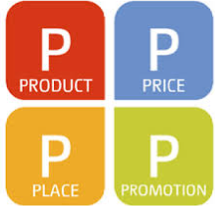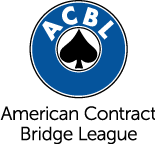The Four P's

A classic approach to thinking about marketing is known as the 'Marketing Mix'. This breaks the marketing tasks down according to product, place, pricing, and promotion. Sometimes it is hard to know where to start, and this is a useful way to orient our thinking, and is examined here in relation to bridge lessons.
Place
Place - where you teach your classes - will naturally be an important component of your overall lesson mix. Below are some locations that you might consider. This list is by no means comprehensive and some creativity will surely lead you to new environments. For example, we know one teacher who rents space from a bowling alley, another who uses a restaurant during the afternoon, and a third who uses a coffee shop in the evening. If you are always on the lookout for a great location, you will be surprised with what presents itself. That said, what follows below is a list of some of the more commonly used locations.
There are two main aspects of place, which we might think of as room and setup. The room will need to meet some basic criteria, for example good lighting and air circulation. It would ideally not require stairs, but have access to them if it is not on the ground floor (some people don’t like elevators). More broadly, it should also be in a nice area and be easily accessed by public transportation if possible.
The setup is the other main aspect of place. The essentials are card tables and chairs. Other aspects of setup, such as bidding boxes, can be more easily transported by the instructor.
The following list of potential locations is ordered by an increasing degree of both factors being met (a good room with card tables).
Your Home
Certainly this option involves the shortest commute. If you have card tables and the room for this, it is certainly an option. Some teachers (and students) may find this option to be a bit personal, however, and may prefer a more neutral location.
A Student's Home
In many areas of education, for example with personal trainers, the instructor will come to the client’s house. This makes sense for intimate lessons, and will typically mean a fairly small group, likely not more than 3 tables. That said, you can still charge for this kind of intimate service, which will typically appeal to a more high-end market.
Bridge Clubs
Bridge clubs are, not surprisingly, one of the most common locations for bridge lessons. That said, even if you are not currently affiliated with a bridge club, they may be open to starting a lesson program. Often you will be able to tell if they have a lesson program by conducting an internet search. They may be willing to rent the space, which has the obvious advantage of being well set up for lessons.
Private Clubs
One option is to work with private, member-based organizations. Some of these may be based around an activity, such as tennis or golf, while others may be more general in nature, for example a women’s club.
One advantage to this approach is that they will take care of all the logistics associated with setting up lessons, such as taking reservations and communicating with the students. In addition, they will often have rooms that are well equipped for bridge (card tables, etc.).
Typically, these organizations will have a staff member who is responsible for setting up all of the organization’s activities and events. They may not currently offer bridge, but would be open to the idea if approached. To do this, you could call the club, explain what you offer, and ask to be in touch with the event coordinator.
A letter explaining what you are offering can also help. Here is a sample letter that can be used when pitching to these private clubs.
Arranging to Teach in Country Clubs
Country clubs can be an excellent place to offer your bridge lessons. They will typically provide the students and a pleasant teaching environment. This video offers some tips on how to approach this type of location about setting up lessons.
Community Spaces
These include libraries, churches, synagogues, and community centers. These types of locations have advantages and disadvantages. One of the main benefits is that they are very scalable and can hold a large number of tables. The main drawback is that you will often need to supply the tables, which can mean a lot of work, and will need to independently take reservations for the class.
Hotels and Cruise Ships
These locations represent a separate type of lesson. Teachers who have large followings will often conduct bridge festivals at resorts or aboard cruise ships. Both of these locations should supply tables and chairs. In the case of cruise ships, this will entail working with a travel agency.
Product
When defining what it is we are offering, it might be tempting to answer ‘bridge information’ and leave it at that. While it would be hard to say that this is not the case, it is too narrow of a definition. In order to arrive at a richer definition of what we are offering, we need to consider not just the product, but also what needs we are satisfying in the target market. Our market research into bridge students suggests they want to have the following four criteria met in their bridge classes:
-Education
-Entertainment
-Social Interaction
Just as it can be a problem to adopt too narrow a focus by considering just the product, it can also be dangerous to adopt too wide a focus by considering what our product does. The right perspective, which will lead to the right approach in the class, involves taking the right view of what we are doing. Let’s go through each of these aspect and first look at what might happen if we take a too narrow, and then too wide a view. Then we will consider what might be the correct approach.
Education
The danger of taking too narrow a view, of considering our product to be bridge information in a strict sense, is that we might end up providing too much information that is too difficult for the class. And we might end up ignoring the other reasons they are in the class. For example, the idea of letting them talk to each other could just be viewed as an exercise in the sharing of ignorance, especially when we are asking them to talk about things that we have the answers to. It is not uncommon for these kinds of approaches to be counterproductive.
The danger of taking too wide a view and focusing on education in general, is that we may give in to the temptation to start providing information on subjects that go beyond bridge. Most people have been in situations where an expert in one area self-appoints themselves an expert in another, as might be the case, for example, if your medical doctor started giving you advice on what political party to vote for. This is a universally unpleasant experience, especially because expertise in one area often has virtually nothing to do with expertise in another.
The best way to meet the students’ desire for education, therefore, is to move at the right speed, and not to fear that that speed is too slow. While doing this, we must also avoid the temptation to use our position as a soapbox for issues that are not directly bridge related.
Entertainment
If we focus too narrowly on bridge information, we may ignore the fact that the students are also there to have fun, and to be entertained. Our approach may become bone dry and sleep inducing. Once again, this is bad for education as it makes for a sleep-inducing environment.
Generally speaking, however, the bigger problem in this category is that we may end up taking too wide a view, that we may end up considering ourselves to be some sort of stand-up comedian. It may be especially tempting to indulge this approach when we see our students laughing. The temptation should be resisted. Chances are, your students will find funnier people on late night television or at the movies. These are also places where they will not be able to find first-rate bridge teachers.
The correct position on this is twofold. First, make sure that the entertainment component of your lessons relates directly to the content of your lessons. You will find this also results in bigger laughs. Secondly, realize that the best entertainment you can offer lays in the game itself. More often than not, attempts to be funny or entertaining will only get in the way of that.
Social Interaction
As with the topics above, taking a too narrow view of our product as bridge information may lead us to undervalue social interaction. We may view it as superfluous or even harmful to the growing of the bridge brain. This would, however, also serve to hurt the amount that is absorbed since, for example, asking the students to talk among themselves is a great way to reinforce the lesson points.
Viewed too widely, we might over-indulge the students and allow the social interaction to continue for a longer than useful duration. While extremely important in measured doses, the educational value of having the students talk among themselves does start to drop off after a certain point.
The solution, as with the other points, rests in the right balance. We must give them time to interact with each other, but must also utilize our authority to end this interaction after a certain point, even if the students are clearly enjoying themselves.
Price
The price for lessons represents a wide range. Some lessons are given as a gift at no fee, others can be very expensive.
A popular rate is $25 to $40 for a 2 to 2.5-hour lesson.
A popular fee for a "Day of Bridge" is $60 to $95, and should include lunch and refreshments during the event. The price should also include the textbook.
Promotion
Cooperative Advertising Program

The Cooperative Advertising Program (CAP) reimburses ACBL teachers, clubs, units and districts for advertising expenses for programs and lessons designed for newcomers and/or to recruit ACBL members. Visit: www.acbl.org for more information.
